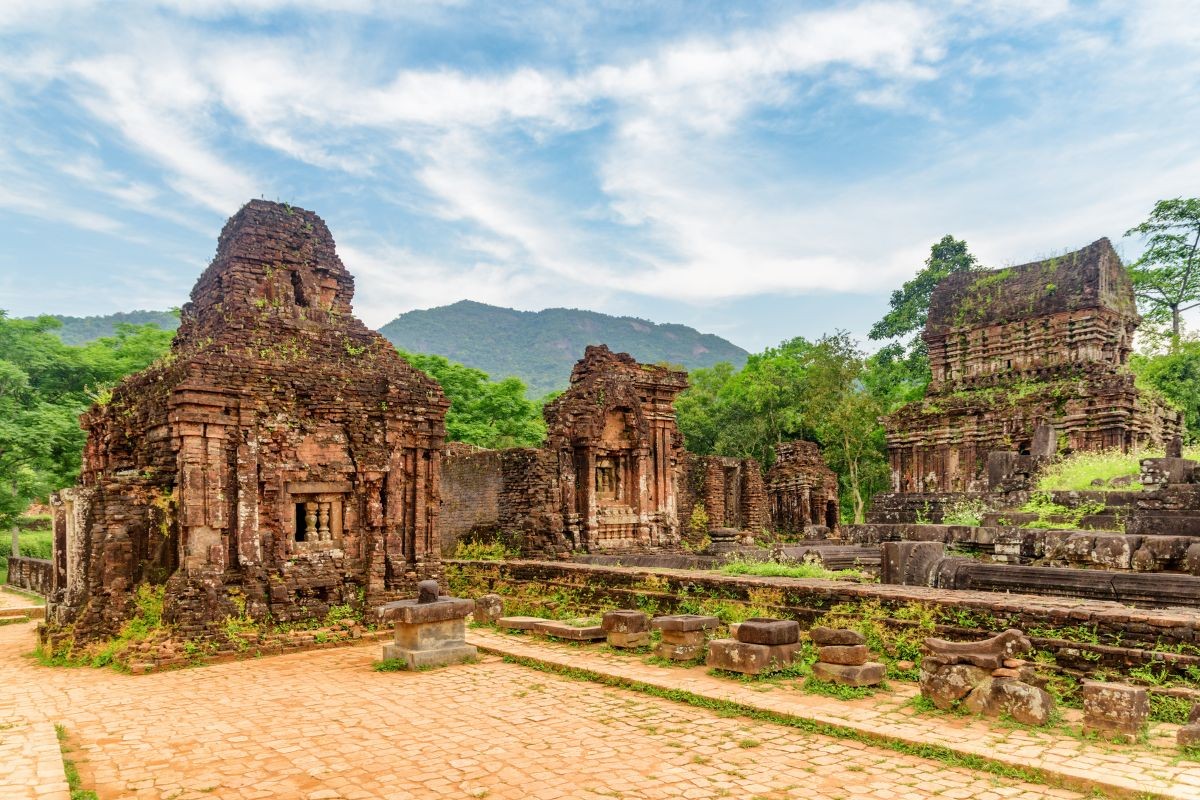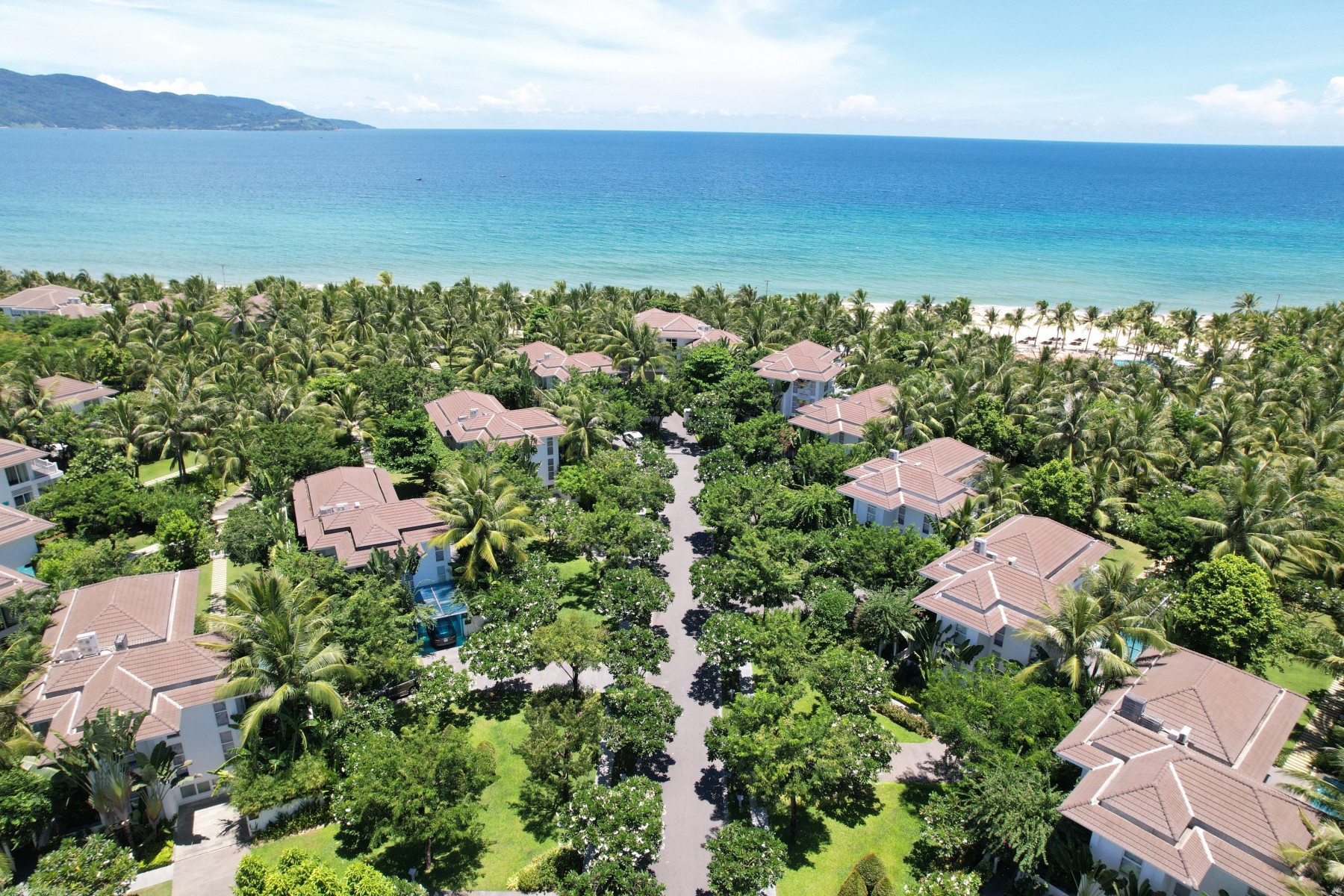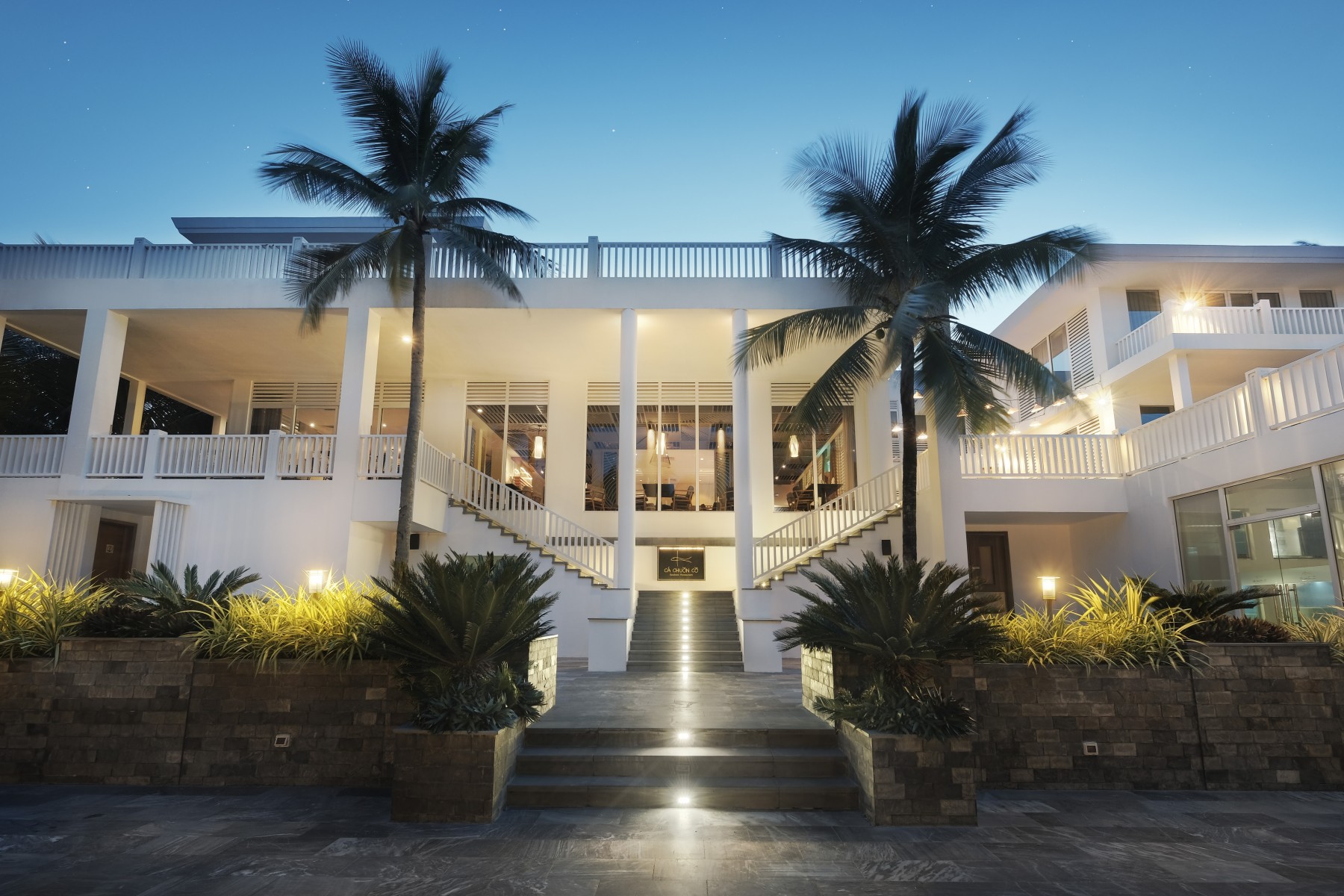Premier Village Danang Resort Managed by Accor - Luxury family-friendly resort
- My Son Sanctuary – The Cultural Heritage of ChampaPremier Village Danang Resort Managed by Accor
- English
- 简体中文
- 한국어
- Tiếng Việt
- See this hotel on Accorhotels.com or brand website in other languages :
My Son Sanctuary – The Cultural Heritage of Champa
My Son Sanctuary, a UNESCO-recognized World Heritage Site, is a cluster of Hindu temple towers built by the Champa Kingdom in Quang Nam. This ancient site preserves over 1,000 years of historical, religious, and architectural value. Join Premier Village Da Nang as we explore the unique history, architecture, and culture of this renowned relic through the article below.
Where Is My Son Sanctuary? Why Was It Recognized by UNESCO?
- Location: Duy Phu commune, Duy Xuyen district, Quang Nam province (40km southwest of Hoi An, 70km from Da Nang)
- Ticket Price: 150,000 VND for adults, 30,000 VND for children under 16 (available for purchase both online and onsite)
- Ticket information: https://www.mysonticketonline.vn
- Opening Hours: 06:00 – 17:00
My Son Sanctuary is a complex of ancient Hindu temples dedicated to the worship of Shiva, built between the 4th and 14th centuries in Quang Nam province. It was an important religious center of the Champa Kingdom, where sacred rituals were held and where kings and high-ranking religious leaders were buried.
In 1999, My Son was recognized as a UNESCO World Heritage Site due to its historical, architectural, and cultural significance. Although parts of the site were damaged due to war and time, conservation and restoration efforts continue to maintain the value of this heritage.
What Makes My Son Sanctuary So Special? Unmissable Experiences Await
An Ancient 8-Meter-Wide Stone Pathway Leading to the Heritage Site
Before reaching the temple complex of My Son, visitors walk along an ancient stone pathway nearly 8 meters wide, winding through the lush tropical forest of Quang Nam. This path is regarded as the “lifeline” that once connected the Cham communities to the religious center devoted to the Hindu god Shiva. Every weathered stone bears the marks of time, and the tree canopies lining the way seem to whisper thousand-year-old stories of pilgrimages and sacred ceremonies tied to this UNESCO-recognized site. Walking this path is a journey back through time, offering a tangible connection to history.
Explore Over 70 Ancient Temple Towers with Unique Cham Architecture
For those seeking extraordinary experiences while traveling in Da Nang – Quang Nam, a visit to My Son Sanctuary is a must. Recognized as a UNESCO World Cultural Heritage site, My Son showcases the ancient temple towers of the Champa civilization, built between the 4th and 14th centuries. Constructed primarily from distinctive red bricks, the site features several temple clusters, with Groups A, B, and C being the most prominent as centers of Shiva worship in Hinduism. What captivates visitors is the mysterious construction technique: the bricks are tightly bonded without mortar, yet have endured over a millennium — a marvel that continues to puzzle historians and architects alike.

Experience the Katê Festival – The Sacred Celebration of the Cham People
If you visit My Son Sanctuary during the 7th month of the Cham calendar (around October in the Gregorian calendar), you’ll have the rare opportunity to immerse yourself in the Katê Festival—one of the most significant cultural and religious events of the Cham people. This festival reenacts ancient rituals dedicated to the god Shiva, including harvest prayers, ceremonial processions, sacred water rituals, and lively performances with paranung drums and graceful Apsara dances. More than just a spiritual homage, Katê is also a vibrant stage for Cham artists to showcase their talents through traditional instruments, colorful costumes, and folk games. It’s an immersive cultural encounter that lets visitors fully experience the spirit of Champa civilization within a UNESCO World Heritage setting.
Witness the Graceful Apsara Dance
During the Katê Festival and other ceremonial times, visitors to My Son Sanctuary can often witness enchanting Apsara dance performances. Accompanied by the rhythmic beats of paranung drums and the echoing sounds of the saranai flute across the forested hills, Cham dancers in traditional attire embody the celestial Apsaras of Hindu mythology. Each hand gesture, glance, and movement carries symbolic meaning—honoring the god Shiva and the deities of protection. It’s a profound moment where spectators don’t just observe, but deeply feel the heartbeat of Cham spirituality and cultural elegance that has endured for over a thousand years.

Must-Try Local Dishes Near My Son Sanctuary
Your journey to My Son Sanctuary becomes even more fulfilling when paired with the flavors of Quang Nam cuisine—a refined fusion of Champa and Vietnamese culinary traditions. After strolling among ancient temple ruins, take time to discover these unforgettable dishes:
- Cau Mong Grilled Veal (Bê thui Cầu Mống): A Duy Xuyen specialty featuring tender veal with golden crispy skin, served with Dai Loc rice paper and aromatic fermented anchovy dipping sauce—an explosion of flavors.
- Phu Chiem Quang Noodles (Mì Quảng Phú Chiêm): Glossy yellow noodles with a light chew, blended with a savory broth made from river shrimp, pork, and roasted peanuts. A humble dish embodying Quang Nam’s culinary soul.
- Rice Crackers with Soft Rice Paper (Bánh đập): A rustic snack featuring crispy grilled rice paper layered with soft steamed sheets, dipped in spicy garlic fish sauce for a uniquely familiar flavor.
- Quang Nam Steamed Rice Cakes (Bánh bèo): Small, silky-soft bowls topped with flavorful shrimp and pork, crispy pork rinds, and fragrant fried shallots.
- Sticky Rice Ginger Cake (Bánh tổ): A traditional festive treat made from glutinous rice, sugar, and ginger—rich in sweetness and symbolic, often gifted during holidays.
- Central-Style Crispy Pancakes (Bánh xèo miền Trung): Miniature crispy pancakes filled with shrimp, pork belly, and bean sprouts, served with fresh herbs and sweet-sour fish sauce—true to Central Vietnam’s signature taste.
More than just a meal, this culinary experience offers deep insight into the lifestyle, culture, and soul of Quang Nam’s people.
Important Travel Tips for Visiting My Son Sanctuary
How to Get to My Son Sanctuary
Whether you’re starting from Da Nang or Hoi An, you can reach My Son by motorbike, car, or bus. Since the trip takes some time, traveling by car is generally the most convenient option.
If you’re traveling from:
- Da Nang (approximately 1.5 – 2 hours): Depart from the city center, follow National Route 1A into Quang Nam province, and look for the signpost at Cau Lau Bridge directing you to the sanctuary.
- Hoi An (45 minutes – 1 hour): Start from Cam Kim Bridge, take Hoang Sa and Truong Sa roads to National Route 1A, then continue about 30km to reach the site.
Best Time to Visit My Son Sanctuary
- The dry season (February to August) is ideal, especially early in the morning or late afternoon when the lighting is beautiful and the weather is pleasant.
- Note: During the rainy season, bring rain gear such as ponchos or umbrellas. Wear comfortable clothing and walking shoes to explore the Cham towers with ease.
Stay at Premier Village Danang Resort – A 5-Star Retreat Managed by Accor

Located about 70km from Da Nang, My Son Sanctuary is a UNESCO World Cultural Heritage site known for its ancient Cham temple towers, the vibrant Katê Festival, and the legendary Apsara dance performances. It’s an ideal destination for those passionate about history, culture, and architecture.
From Premier Village Danang Resort, you can easily combine your My Son visit with other enriching experiences such as exploring attractions in Hoi An, discovering the Bay Mau Water Coconut Forest, or checking out fun things to do in Da Nang. With its prime beachfront location along My Khe Beach, this 5-star resort is also the perfect base for planning your 3-day, 2-night Da Nang travel itinerary, blending luxury relaxation with cultural exploration in Central Vietnam.
Address: 99 Vo Nguyen Giap Street - Ngu Hanh Son Ward - 550000 - Danang - Vietnam Phone: +84 (0) 2363 919 999 Fax: +84 (0) 2363 919 998 Email: H9530@accor.com





Follow us
Stay in touch and connected to all the news and happenings.